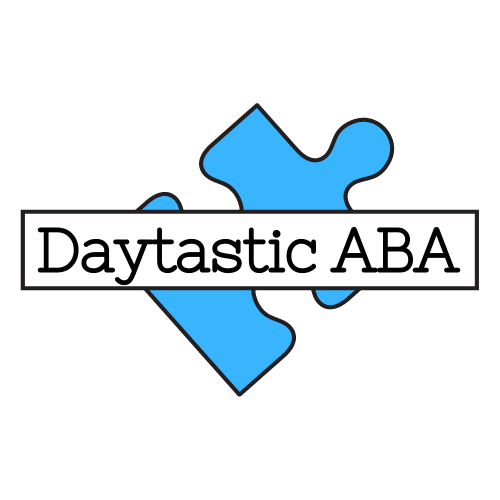What Does a BCBA Do in ABA Therapy? A Guide for Families
What Does a BCBA Do in ABA Therapy? A Guide for Families
When your child starts ABA therapy, you’ll likely hear a lot of new terms and meet several new people. One of the most important team members is the BCBA, which stands for Board Certified Behavior Analyst. Understanding what a BCBA does can help you feel more comfortable, more involved, and more confident as you support your child’s progress.
What is a BCBA’s Role in ABA Therapy?
A BCBA is a behavior expert who has a master’s degree or higher, has completed hundreds of supervised hours in the field, and has passed a national certification exam. They are trained to understand how behavior works and how to teach new skills in a way that helps people become more independent and successful in everyday life (Behavior Analyst Certification Board, 2020). BCBAs also follow a professional code to ensure they provide ethical, respectful, and high-quality services.
Assess Your Child’s Needs & Create a Personalized Treatment Plan
One of the first things a BCBA does is complete an assessment. This means they gather information about your child’s strengths, needs, and how they learn best. This might include watching your child play, asking you questions, and using tools like checklists or structured assessments. The assessment helps the BCBA understand which skills your child already has and which ones still need to be taught. They also look at any behaviors that might make learning or socializing harder, such as tantrums, refusing directions, or difficulty asking for help.
Based on this information, the BCBA creates a personalized ABA treatment plan. This plan lists specific goals that are meaningful and practical for your child, like learning to ask for what they want, following instructions, using the bathroom independently, or playing with others. The BCBA also includes strategies to reduce behaviors that interfere with learning. For example, if your child yells when they’re frustrated, the BCBA might teach them to ask for a break instead. All goals are chosen with your input because no one knows your child better than you do.
After the plan is written, the BCBA remains actively involved in your child’s therapy. They work closely with the Registered Behavior Technicians (RBTs), who provide most of the day-to-day support. RBTs use the BCBA’s plan to run lessons and collect data during sessions. The BCBA supervises their work to make sure everything is being done correctly and consistently, and that your child is making progress. The BCBA also updates the plan as needed. If something isn’t working, they make thoughtful changes based on your child’s response.
Support Families
Another important part of a BCBA’s job is supporting families. BCBAs often meet with parents and caregivers to explain what’s happening in therapy and teach how to use the same strategies at home. This helps with generalization, which means your child can use the skills they learn during therapy in other settings—like home, school, or the community. If your child is learning to say “help, please” in therapy, the BCBA will work with you to encourage them to use it during daily routines like brushing teeth, getting dressed, or playing.
Monitor Progress in ABA Therapy
The BCBA also keeps track of how your child is progressing. They use the data collected by the RBTs to make decisions. If your child is meeting goals, the BCBA will add new ones. If a skill is too difficult, they may change how it’s being taught. These decisions are always based on data and your child’s individual needs.
Reduce Challenging Behaviors
Teaching new skills is just one part of the BCBA’s role. They also help reduce challenging behaviors in a kind, thoughtful way. Instead of simply trying to stop unwanted behavior, they try to understand why it’s happening. Is your child trying to get attention, avoid something, or communicate a need? Once they know the reason, they teach a better way to meet that need. For example, if your child hits when they want a toy, the BCBA might teach them to say or sign “my turn.” This approach is called functional behavior assessment and helps your child feel more successful and understood (Cooper, Heron, & Heward, 2020).
Respect Family Values & Cultural Differences
BCBAs also make sure ABA therapy is provided in a responsible and ethical way. They follow professional standards to protect your child’s dignity and ensure the services they receive are safe and effective (Behavior Analyst Certification Board, 2020). BCBAs respect family values and cultural differences and make sure each treatment plan fits your child’s unique needs and background.
Evaluate Needs & Support Growth
Sometimes BCBAs work with your child in different settings, such as school or at home. They may also collaborate with other professionals, like speech therapists or occupational therapists, to make sure everyone is working toward the same goals. In a clinic or program setting, BCBAs often help train staff, write policies, and ensure quality across the team.
During a typical day, you might see your BCBA reviewing data, observing a session, guiding an RBT, or meeting with your family. They may be adjusting a program, modeling how to teach a skill, or celebrating a new success. Behind the scenes, they are constantly evaluating your child’s needs and finding the best ways to support growth.
A Trusted Partner
In many ways, the BCBA is your child’s guide through the ABA process. They don’t just write goals—they help your child achieve them. They don’t just manage data—they use it to make meaningful changes. At Daytastic ABA, our BCBAs are passionate about helping children reach their full potential. We are honored to work alongside families and to be part of each child’s journey.
So, what does a BCBA do in ABA? They assess, plan, teach, supervise, support, and care. They bring knowledge, compassion, and a deep commitment to helping children grow. They are an essential part of your ABA team and a trusted partner in your child’s success.
References
Behavior Analyst Certification Board. (2020). BACB 6th edition task list and supervision standards. https://www.bacb.com
Cooper, J. O., Heron, T. E., & Heward, W. L. (2020). Applied behavior analysis (3rd ed.). Pearson Education.











